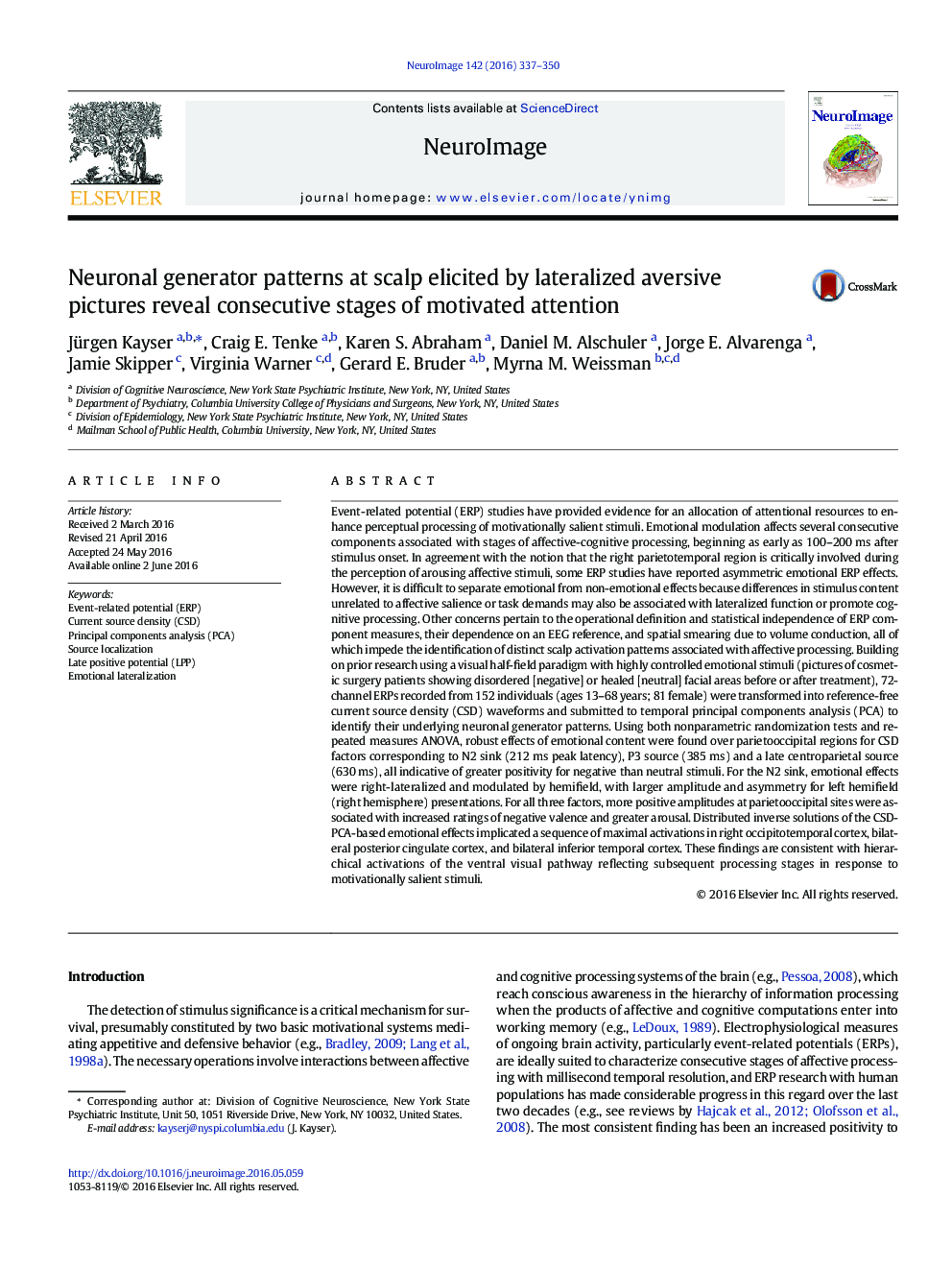| کد مقاله | کد نشریه | سال انتشار | مقاله انگلیسی | نسخه تمام متن |
|---|---|---|---|---|
| 5631442 | 1580866 | 2016 | 14 صفحه PDF | دانلود رایگان |
- ERPs recorded to hemifield presentations of negative or neutral stimuli (NÂ =Â 152).
- Emotional ERP components identified via CSD transform and temporal PCA.
- Three consecutive components with greater arousal-related parietooccipital positivity.
- Emotional asymmetries of N2 sink (right > left) modulated by left visual field.
- Distributed inverses indicated hierarchical activations along ventral visual stream.
Event-related potential (ERP) studies have provided evidence for an allocation of attentional resources to enhance perceptual processing of motivationally salient stimuli. Emotional modulation affects several consecutive components associated with stages of affective-cognitive processing, beginning as early as 100-200Â ms after stimulus onset. In agreement with the notion that the right parietotemporal region is critically involved during the perception of arousing affective stimuli, some ERP studies have reported asymmetric emotional ERP effects. However, it is difficult to separate emotional from non-emotional effects because differences in stimulus content unrelated to affective salience or task demands may also be associated with lateralized function or promote cognitive processing. Other concerns pertain to the operational definition and statistical independence of ERP component measures, their dependence on an EEG reference, and spatial smearing due to volume conduction, all of which impede the identification of distinct scalp activation patterns associated with affective processing. Building on prior research using a visual half-field paradigm with highly controlled emotional stimuli (pictures of cosmetic surgery patients showing disordered [negative] or healed [neutral] facial areas before or after treatment), 72-channel ERPs recorded from 152 individuals (ages 13-68Â years; 81 female) were transformed into reference-free current source density (CSD) waveforms and submitted to temporal principal components analysis (PCA) to identify their underlying neuronal generator patterns. Using both nonparametric randomization tests and repeated measures ANOVA, robust effects of emotional content were found over parietooccipital regions for CSD factors corresponding to N2 sink (212Â ms peak latency), P3 source (385Â ms) and a late centroparietal source (630Â ms), all indicative of greater positivity for negative than neutral stimuli. For the N2 sink, emotional effects were right-lateralized and modulated by hemifield, with larger amplitude and asymmetry for left hemifield (right hemisphere) presentations. For all three factors, more positive amplitudes at parietooccipital sites were associated with increased ratings of negative valence and greater arousal. Distributed inverse solutions of the CSD-PCA-based emotional effects implicated a sequence of maximal activations in right occipitotemporal cortex, bilateral posterior cingulate cortex, and bilateral inferior temporal cortex. These findings are consistent with hierarchical activations of the ventral visual pathway reflecting subsequent processing stages in response to motivationally salient stimuli.
Journal: NeuroImage - Volume 142, 15 November 2016, Pages 337-350
